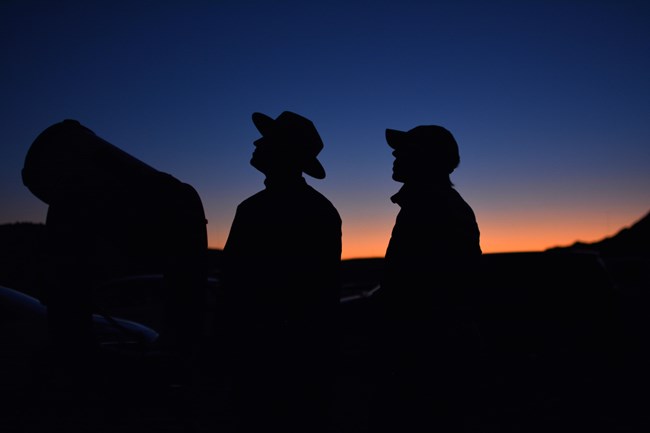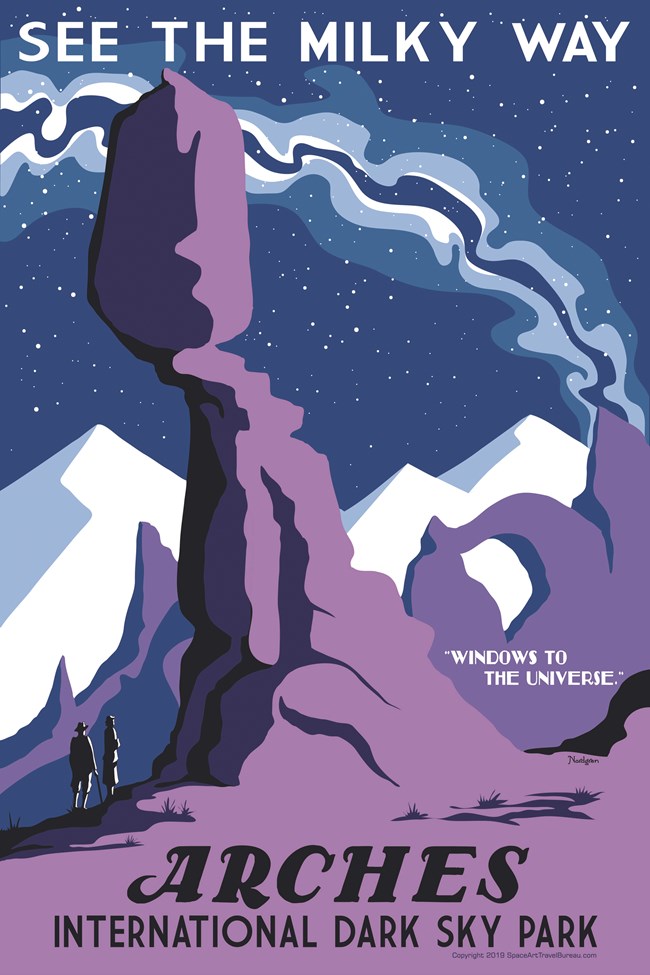
NPS/Will Pedro The national parks and monuments of the Colorado Plateau have long been popular destinations for travelers. In addition to their stunning landscapes and rich cultural history, these areas share another resource: some of the darkest skies remaining in the contiguous 48 United States. The darkness of a moonless night at Arches surprises many visitors. As few as one in ten Americans lives in an area where they can see the estimated 2,500 stars that should be visible under normal conditions. In many cities, the night sky is completely obscured by the glow of urban settlement. At Arches, the naked eye is sufficient to witness a wealth of stars. Under the right conditions, common binoculars may even reveal the rings of Saturn. Arches' relative isolation from the artificial light of urban areas makes it an ideal place for viewing the night sky. In 2019 Arches National Park became certified as an official International Dark Sky Park. 
NPS/Kat Connelly Stargazing TipsPlan ahead & check conditions. Where to StargazeOn a clear night, you can see great stars just about anywhere in the park. Areas off the main park road with few obstructions of the sky are best. The farther north you drive, away from the lights of Moab, the darker the sky will be. Try stargazing at these areas:

2026 Night Sky Almanac
Equinoxes and Solstices
Meteor Showers
Stargaze with a RangerVisit the page listed below for a calendar of stargazing events in southeast Utah. | ||||||||||||||||||||||||||||||||||||||||||
Last updated: December 16, 2025
